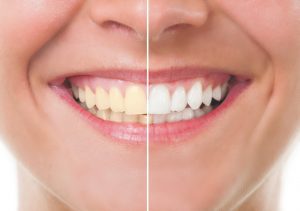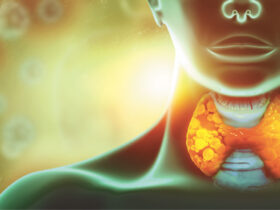By DR. AMANDA RIZNER
 Dental whitening is one of the most popular cosmetic procedures on the market today. Whitening aims to brighten and enhance the appearance of teeth by reducing or eliminating colors and stains. There are several options available to consider and each comes with its own advantages and disadvantages.
Dental whitening is one of the most popular cosmetic procedures on the market today. Whitening aims to brighten and enhance the appearance of teeth by reducing or eliminating colors and stains. There are several options available to consider and each comes with its own advantages and disadvantages.
At-Home Whitening Kits
The most popular option on the market for teeth whitening are at-home whitening kits. These kits come with premade strips or trays pretreated with a mild bleaching solution. They often come in a variety of whitening percentages which pertain to the strength of the bleaching solution on the strips. A lower percentage may be able to whiten just as well as higher percentage whitening agents, however the patient will need to use these strips on a more consistent basis and for a longer period of time. The advantage to these kits is that they normally can be bought for a relatively low price. The patient can use these strips as much or as little as they choose. It is normally best to wear these types of whitening agents for an hour only, as the bleaching agent can decrease effectiveness with time unless otherwise stated on the instructions.
In Office Professional Whitening
This is perhaps the most effective and quickest method of teeth whitening. Most dentists will require a full examination to make sure you are a candidate for in-office whitening. They will ensure there is no active infection or extensive decay present before starting the procedure. In-office whitening uses a much higher concentration of either hydrogen or carbamide peroxide under a controlled dental setting. This higher concentration can cause tissue irritation if not carefully contained, which is why it is placed by a highly skilled dental assistant or dentist. Immediate results can be achieved in usually one hour. There are also newer whitening products on market that target deep intrinsic tooth stain caused by antibiotics as a child. Previously, the only treatment for this was to crown or veneer the existing teeth to improve cosmetics.
Due to the higher concentration of bleaching agent used, some patients do report sensitivity after the procedure. We usually recommend patients use a sensitive toothpaste about 3-4 weeks before starting the procedure and then continue using this toothpaste for the next few weeks until they find relief. This is also advised for take home kits, as some patients report sensitivity even with low concentrations of bleaching agents. The dentist can also prescribe either a fluoridated or non-fluoridated toothpaste that also helps decrease this post op sensitivity.
Natural or DIY Methods
There are many “natural” or homemade whitening recipes that can be found trending throughout internet searches. Some of these include homemade toothpastes using baking soda, charcoal based products, and lemon-based products. It’s important to note that most of these products lack scientific evidence and professional guidance required to ensure their safety and efficacy. Some of these products are made with a very high RDA values (Relative Dentin Abrasion) which can cause significant erosion to the enamel of tooth. Due to this high abrasive factor, the product will initially appear to “whiten” the teeth, but in reality is only doing so by removing the protective enamel.
Conclusion
Teeth whitening has gained significant popularity due to its ability to provide noticeable results in a short amount of time. It’s important to note that teeth whitening is only effective on a natural tooth surfaces. Bleaching agents will not whiten previously placed restorations such as veneers, crowns, and fillings. Sometimes bleaching may be able to remove the stain around the edges of these restorations. It’s important to speak with your dentist before whitening in order to have the proper expectations of what whitening can do for you. This way the patient can choose a method of whitening that aligns with their goals and their comfort level.
7590 Fruitville Rd #100
Sarasota, FL 34240
(941) 529-0055
www.dentistryonfruitville.com







